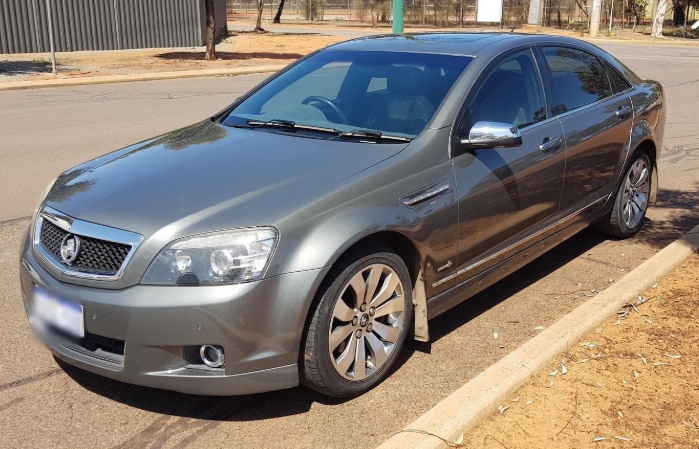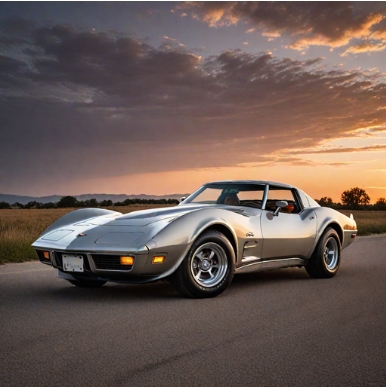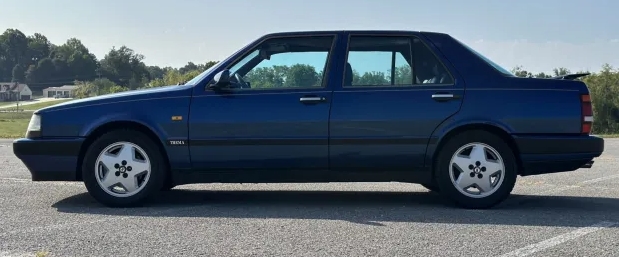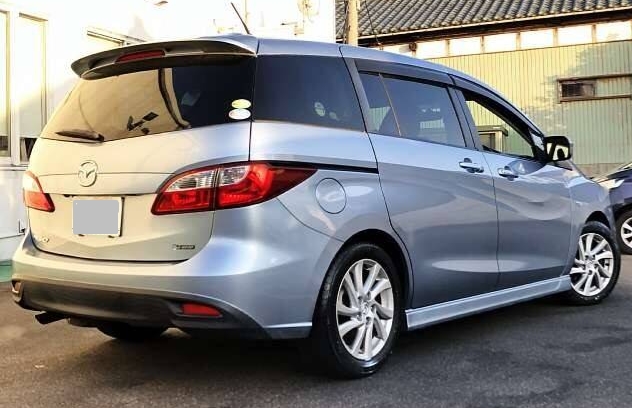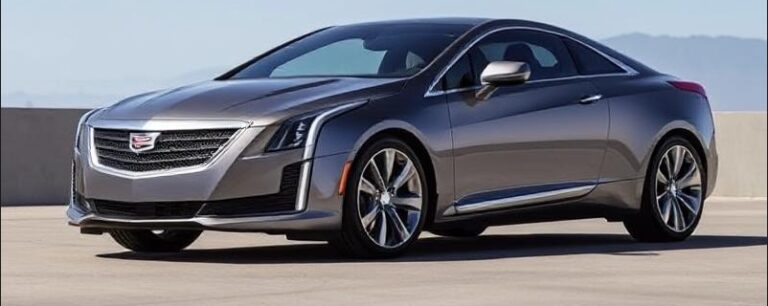The Sceptre and the Sedan: An Evolution of the Holden Caprice
The Holden Caprice. The name itself evokes a certain gravitas, a sense of Australian automotive royalty. For decades, it sat atop Holden’s hierarchy, the definitive luxury flagship, often sharing its robust architecture with its sportier sibling, the Commodore, but cloaked in a longer wheelbase and an undeniable air of executive refinement. The Caprice was more than just a large sedan; it was a statement about success, stability, and the enduring appeal of a comfortable, powerful, Australian-made cruiser.
Its evolution spans nearly four decades, mirroring the broader shifts in Australian motoring tastes, economic landscapes, and manufacturing capabilities. From its early aspirations as a premium variant to its final, technologically advanced iteration, the Caprice story is intrinsically linked to the narrative of Holden itself.
The Genesis: WB Statesman and the Dawn of a New Era (1983-1990)
The direct lineage of the Caprice as we understand it truly begins with the Statesman nameplate, which Holden had been utilizing since 1971 for its long-wheelbase luxury offerings. However, the specific badge of the “Caprice” arrived during a pivotal moment for the brand.
1983: The Holden WB Caprice is Introduced
The Holden Caprice emerged as the top-tier version of the WB series Statesman. While the Statesman line was already the stretched, more luxurious version of the standard Holden HZ/WB sedan, the Caprice differentiation was crucial. It positioned itself squarely against imported European and Japanese luxury barges, offering V8 power and massive interior space at a potentially more attainable price point.
Key Characteristics of the WB Caprice (1983–1984):
- Base Model: WB Caprice
- Engine Options: Primarily the 4.9L V8 (308 cubic inch) was standard or optional, sometimes paired with the 3.3L inline-six.
- Trim: Featured higher levels of velour upholstery, improved sound deadening, and more standard luxury features than the standard Statesman.
The WB series was relatively short-lived, representing the end of the classic, almost American-styled large Australian sedan.
.

.
The Commodore Foundation: VN to VS Generations (1990–1997)
The next major shift occurred with the introduction of the VN Commodore in 1988. This generation fundamentally changed Holden’s platform strategy. The Statesman and Caprice were entirely re-engineered to sit on a significantly lengthened version of the new, front-wheel-drive-inspired (though still rear-wheel-drive) Commodore architecture.
1990: The VN Caprice Arrives
The VN Caprice was the absolute pinnacle of the VN range. It featured a distinctive, square-jawed front end and extended rear doors, clearly separating it from the standard Commodore sedan proportions.
- Model Philosophy: To offer traditional large-car luxury within a modern platform.
1991: The Rise of the V8 and Calais Integration
While the VN Caprice was initially available with a 5.0L V8, the integration of luxury equipment was crucial. The Caprice traditionally received the best of what Holden offered, often borrowing features later seen on the Calais.
1994: VP Caprice
The VP Caprice was an evolution, focusing on safety and refinement. It saw the introduction of standard anti-lock braking systems (ABS) and driver-side airbags earlier than some lower-tier models.
1995: VR Caprice
The VR Caprice brought significant styling updates, moving away from the sharp edges of the VN/VP towards a more rounded, aerodynamic look. This generation benefited immensely from the Holden’s commitment to improving build quality and material finishes.
- Models: Often simply referred to as the Caprice.
1996: VS Caprice
The final iteration of this platform was the VS Caprice. This version is often celebrated for its robust performance, especially when equipped with the 195kW 5.0L V8 engine (which had been significantly revised). By this point, the Caprice was firmly established as the go-to vehicle for fleet sales, government departments (often in Police Pack specification), and established families seeking comfort.
The Modern Flagship: WH and WK/WL Generations (1999–2006)
The late 1990s heralded a new era of sophistication, with Holden aiming the Caprice squarely at contemporary luxury standards.
1999: WH Caprice – The V-Series Leap
The WH Caprice marked a significant technical departure. It was the first Caprice built on the new VT platform architecture (introduced in 1997 for the Commodore), featuring fully independent rear suspension (IRS) across the range. This transformed the Caprice’s handling dynamics from the old leaf-spring/live-axle setup, making it far more composed and European in feel.
Crucially, the WH series reintroduced two distinct luxury tiers:
- WH Caprice: The standard luxury model.
- WH Statesman: Often positioned slightly below the Caprice, sometimes missing certain high-end features or engine options as standard, though the distinction varied between model years.
The WH generation also saw the introduction of the powerful 5.7L Gen III LS1 V8 engine, borrowed from the Corvette/Monaro, giving the Caprice genuine performance credentials to match its size.
2003: WK Caprice – Subtle Refinement
The WK Caprice facelift maintained the WH body shell but introduced updated headlights, grilles, and a vastly improved interior focused on driver ergonomics and modern aesthetics. Safety enhancements, including Electronic Stability Control (ESC), became standard, reflecting tightening global safety standards.
2004: WL Caprice – The Final Polish
The WL Caprice was the last iteration of the WH/WK body shell. It featured further mechanical refinements, most notably the introduction of the 6.0L Gen IV V8 engine in later models, boasting increased power output. The WL generation benefited from Holden’s continued investment in noise, vibration, and harshness (NVH) reduction, making it arguably the quietest and most comfortable Australian car ever produced up to that point.
The Renaissance: The VE and VF Generations (2006–2017)
The introduction of the VE Commodore platform in 2006 was a monumental achievement for Holden, being the first truly bespoke platform since the 1980s. The subsequent Caprice leveraged this superior engineering.
2006: VE Caprice – Style and Substance
The VE Caprice was not merely a stretched Commodore; it was redesigned with unique rear panels, lighting, and, crucially, a significantly longer wheelbase. This resulted in limousine-like rear legroom—a key differentiator for the executive market.
- Trim Levels (VE Series I & II):
- VE Caprice: The entry-level luxury model, typically equipped with the 3.6L Alloytec V6 or the 6.0L V8.
- VE Caprice V: Introduced as the fully loaded model, featuring premium leather, advanced infotainment, and the best available luxury technology.
The VE Caprice was critically acclaimed for its world-class chassis balance, proving that a large, rear-wheel-drive sedan could handle with surprising agility.
2013: VF Caprice – The Final Act
The VF Caprice launched in 2013, coinciding with the retirement of the Statesman nameplate. The VF marked the end of the Caprice lineage as a distinct, long-wheelbase variant based on the standard Commodore sedan.
With the VF, the Caprice became the only long-wheelbase Holden available. Holden streamlined the offering:
- VF Series I (2013–2015): Continued with the Caprice and Caprice V trims, using the updated LFX V6 and the 6.0L L77 V8.
- VF Series II (2015–2017): This final major update brought the highly acclaimed 6.2L LS3 V8 (previously only available in the performance HSV models) as the standard engine for the Caprice V, producing 310kW. This final iteration was powerful, refined, and technologically sharp, equipped with superior infotainment systems and advanced driver aids.
The End of an Era (2017)
The Holden Caprice ceased production in October 2017, concurrent with the closure of Holden’s Elizabeth manufacturing plant in South Australia. The final VF Series II Caprice V represented the pinnacle of 34 years of evolution, combining decades of refinement into a technologically capable, large, rear-wheel-drive sedan powered by a genuinely world-class V8 engine.
Legacy and Lasting Impact
The Holden Caprice played a unique role in the Australian automotive landscape. It was never intended to be a high-volume seller like the Commodore, but rather the benchmark against which Australian luxury was measured.
It served dual roles: as the ultimate private luxury vehicle for executives and families demanding space and comfort, and as the primary vehicle for official government transport fleets—from local councils to the Governor-General—earning it the nickname “The Official Car of Australia.”
Its evolution tracked Holden’s technological progress: moving from basic V8 muscle in the WB era, through the necessary modernization of the VN/VS platforms, to the sophisticated independent suspension and world-class chassis dynamics of the VE/VF generations.
While imported luxury brands continued to gain market share throughout the 1990s and 2000s, the Caprice maintained a loyal, dedicated following drawn to its uniquely Australian attributes: massive interior space, powerful local V8 engines, and the reassuring familiarity of a car built to conquer vast distances in comfort. The Caprice remains an enduring symbol of Holden’s ambition to build a vehicle that could truly compete at the highest levels of motoring luxury.
